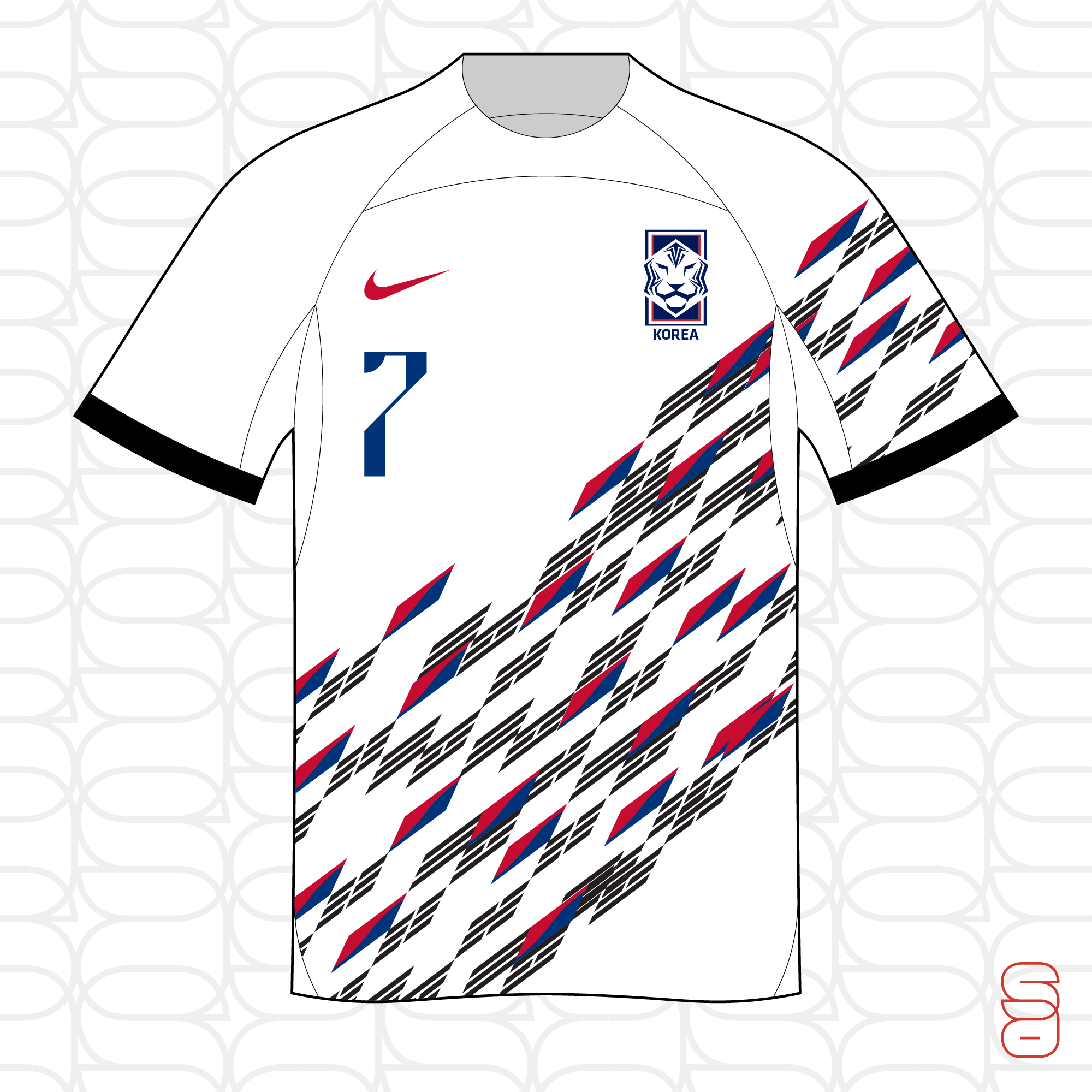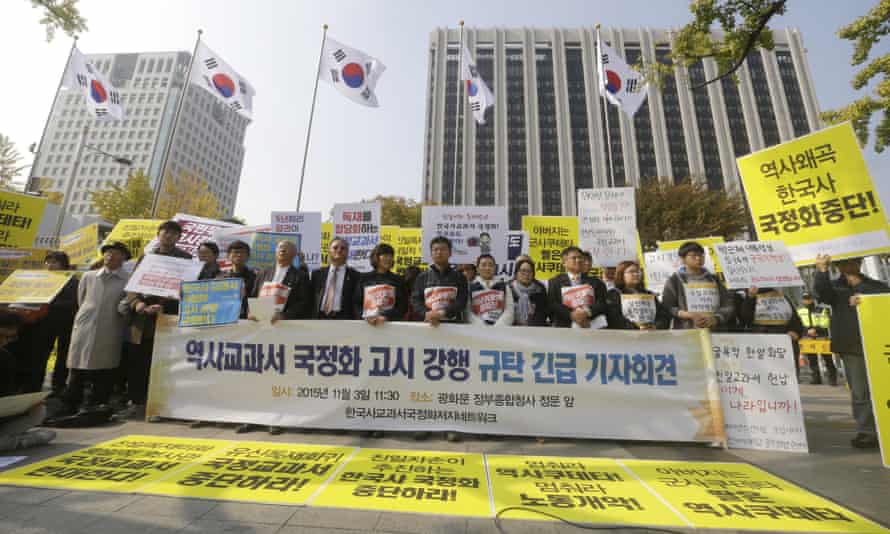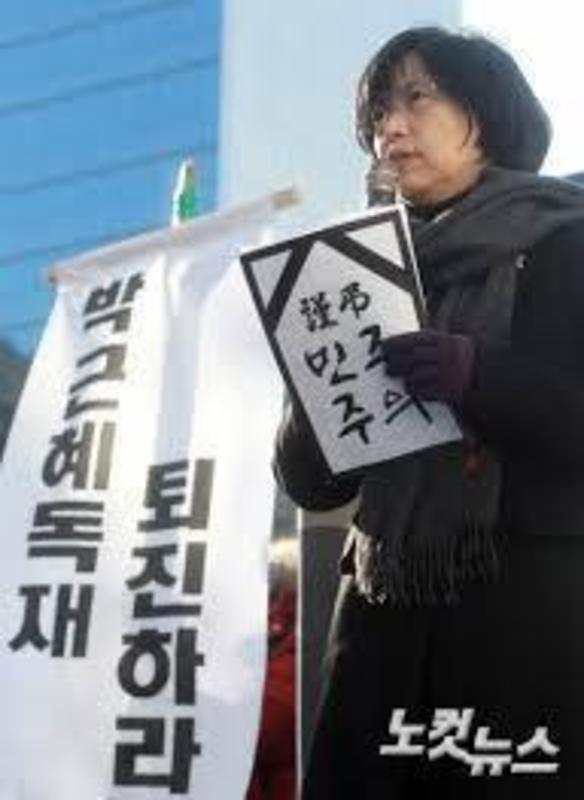Progressivism (Korean: 진보주의; Hanja: 進步主義; RR: Jinbojuui) in South Korea is a left-leaning political ideology, broadly associated with social democracy, cultural progressivism, and left-wing nationalism. It advocates for the promotion of social equality and welfare, economic justice, the protection of human rights and minority groups, peace and the reunification of the Korean Peninsula, as well as environmental sustainability.
Modern South Korean progressivism emerged and took shape during the resistance to military dictatorship and became a distinct political movement in the 1990s. As the pro-democracy student activists from the 1970s and 1980s matured into progressive political leadership, their views on society, history, economy, and foreign policy feature prominently in progressive narratives. Domestically, progressives promote economic justice and labor rights in response to the dominance of chaebols in Korean economy, stemming from dirigisme during military dictatorships. Internationally, they take a conciliatory stance toward North Korea and have developed anti-American sentiments through college, viewing the United States as a supporter of the authoritarian regimes during pro-democracy struggles. The more progressive faction of the movement calls for the withdrawal of the US troops stationed in South Korea.
Historically, there have been communist elements within the progressive movement, but they have been largely powerless in contemporary South Korean politics.
History
Labor movement
South Korean labor movements have been consistently driven by left-leaning labor organizations since liberation from Japanese colonial rule in 1945. Many of the political prisoners under imperial Japan were leftists and labor activists. Trade unions grew dramatically in liberated Korea, with Chŏnp'yŏng (조선노동조합전국평의회; 朝鮮勞動組合全國評議會; lit. General Council of Korea Trade Unions) – a communist-led union – having a membership of 574,475 by late 1945 and nearly a quarter-million by summer of 1946. However, the United States Army Military Government in Korea suppressed worker protests organized by Chŏnp'yŏng, arresting union leaders and forcing railroad workers back to work.
In the 1960s, Park Chung Hee implemented a centrally controlled economy that prioritized the growth of large Korean conglomerates, or chaebols, while maintaining strict control over the working class. In the Peace Market along Cheonggyecheon in downtown Seoul, over 20,000 women labored under inhumane working conditions in garment sweatshops. They worked an average of 15 hours a day, often cramped in spaces just 3 feet high, forcing them to remain seated or bent over for long periods of time. Upon witnessing the cruel workspaces of the workers, Jeon Tae-il engaged in labor activism to no avail and later in 1970 self-immolated in protest, shouting "Workers are human beings, too". Jeon's suicide sparked national interest and galvanized labor-rights movements into the 1970s.
When the citizens of Gwangju rose up against Chun Doo-hwan's dictatorial regime in 1980, the Chun regime responded with brutal military force, killing a still disputed number, estimated to be in the hundreds and sometimes thousands. After the Gwangju Uprising, Chun's regime continued cracking down on labor organizing, removing and blacklisting thousands of activists from union positions. Through all of this, the United States not only did not intervene but also allowed Chun to move key military units – the US-Korean Combined Forces Command – that had been under US jurisdiction.
The South Korean pro-democracy and labor activists, who had largely been pro-American and viewed the United States as a beacon of human rights and liberal democracy, were dismayed by the Carter administration's response and later the Reagan administration's embrace of the Chun regime in 1981. This disillusionment led the South Korean intellectuals to reject pro-US developmentalist neoliberalism, making room for various strands of Marxism to gain popularity. The resulting anti-Americanism fostered the view of South Korea as a US colony and prompted a reevaluation of labor organizing. This gave rise to the Social Formation Debate, centered on identifying the primary revolutionary agent: the working class or the Korean people.
The progressive movement in South Korea emerged from the debate splintered into the PD (민중민주; Minjungminju; lit. People's Democracy) faction and NL (민족해방; Minjokhaebang; lit. National Liberation) faction. The PD faction prioritized the class struggle, identifying the working class as the principal revolutionary agent and focusing on labor movements to challenge the capitalist class. In contrast, the NL faction adopted a left-wing nationalistic approach and viewed the Korean people – both the North and the South – to be the principal revolutionary agent. They argued uniting the Korean people to resist American imperialism should take precedence over addressing internal class struggles.
The PD faction grew into a Western-style leftist party, influenced by American liberalism and social democracy, while NL was a left-wing nationalist party that mixes ethnic nationalism, reunificationism and social progressivism. PD and NL are political terms that refer to the two pillars of South Korea's progressive camp and are still frequently used today. As of now, the representative PD-affiliated progressive party is the Justice Party, and the representative NL-affiliated progressive party is the Progressive Party.
Shinjwapa
After the collapse of the Soviet Union in the 1990s, the New Left movement in Europe and the United States and postmodernist discourse became known, creating a Sinjwapa (신좌파; 新左派; lit. New Left faction) in South Korea. They advocate youth rights, LGBT rights and feminism. Currently, South Korea's representative Sinjwapa parties include the Green Party and Basic Income Party.
Progressive parties
Gujwapa (Old Left)
Communist or far-left socialist
- Workers' Party of South Korea (1946–1949; banned)
- Anti-Imperialist National Democratic Front → National Democratic Front of South Korea → Anti-Imperialist National Democratic Front (1969–; banned)
- Socialist Revolutionary Workers' Party → Labor Party (2016–2022; unregistered; merged)
- People's Democracy Party (2016–)
Hyeoksingye (Innovation-faction)
- Preparatory Committee for National Construction → People's Party of Korea → People's Labor Party (1945–1950)
- Socialist Party (1951–1953)
- Progressive Party (1956–1958; banned)
- United Socialist Party of Korea (1961–1967; banned 1961–1966)
Minjungminju (PD)
- The People's Party (1990–1992)
- People's Victory 21 → Democratic Labor Party (1997–2011)
- Youth Progressive Party → Socialist Party → Hope Socialist Party → Korea Socialist Party → Socialist Party (1998–2012)
- New Progressive Party (2008–2012)
- Unified Progressive Party (2011–2012)
- Progressive Justice Party → Justice Party (2012–) - However, there are a few Minjokhaebang and Shinjwapa factions in the Justice Party.
- Labor Party (2013–)
- Socialist Revolutionary Workers' Party → Labor Party (2016–2022; unregistered; merged)
Minjokhaebang (NL)
- People's Victory 21 → Democratic Labor Party (1997–2011)
- Unified Progressive Party (2011–2014; banned)
- People's United Party (2016–2017)
- New People's Party (2017)
- Minjung Party → Progressive Party (2017–)
Shinjwapa (New Left)
- Green Social Democrats (2004)
- Green Peace Party (2002–2004)
- Social Democratic Party of Korea (2002–2004)
- Green Party Korea (2012–)
- Future Party (2017–)
- Basic Income Party (2020-)
- New Progressive Alliance (2024)
- Social Democratic Party (2024)
Progressive-liberal
- Democratic Independent Party (1947–1948)
- Progressive Party (1956–1958)
- People's Party (1988)
- Hankyoreh Democratic Party (1988–1991)
- Popular Party (1989–1992)
- Participation Party (2010–2011)
- Unified Progressive Party (2011–2012, factions)
- Youth Party (2012)
- Justice Party (2012–)
- Peace and Justice (2018)
- Future Party (2017–)
- Basic Income Party (2020–)
- Let's Go! Environmental Party (2020–)
- Democratic Alliance of Korea (2024–; satellite of the liberal DPK, the NPA and the Progressive Party)
Progressive media
- OhmyNews – liberal-leaning bias
- Pressian – progressive
- Voice of the People – progressive, resistance nationalism
- The Women's News – feminism
Progressive personalities
Major progressive parties election results of South Korea
Presidential elections
Legislative elections
Local elections
See also
- Conservatism in South Korea
- Feminism in South Korea
- Hanchongnyon
- Handaeryeon
- Identity politics – One of the main factors in distinguishing between the liberal and progressive camps in South Korea. (Those who support identity politics are classified as progressives.)
- Left-wing nationalism in South Korea
- Juchesasangpa (far-left)
- South Korean Socialist Workers' Alliance
- Liberalism in South Korea
- Progressive-liberalism
- LGBT rights in South Korea
- List of political parties in South Korea
- Socialism
- Democratic socialism (left-wing)
- Social democracy (centre-left to left-wing)
- Undongkwon
Notes
References




